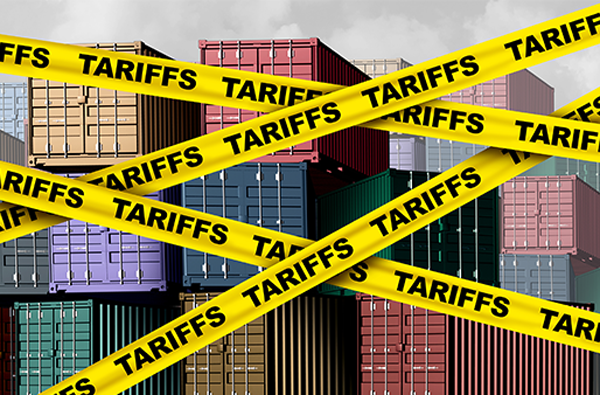
Estimated Year-End Distributions for U.S. Global Investors Funds
This information is for tax planning purposes and may not be accurate for tax reporting. When preparing tax returns, please use the information in the tax documents that U.S. Global Investors will provide in early 2025.
Based on preliminary calculations, the funds listed in the table below may have income dividend and/or capital gains distributions in December 2024. Most bond funds accrue dividends daily and distribute them on the last business day of each month.
Note: Investing in a taxable account shortly before a fund distributes dividends and/or capital gains may result in a taxable distribution. In certain cases, particularly if that fund expects to make a large distribution, it may be advisable to delay an investment until after the fund’s dividends are distributed.
Distribution Dates
The following dates will apply to each U.S. Global Investors’ equity fund that will pay distributions:
| Record Date | 12/18/2024 |
| Ex-Dividend Date | 12/19/2024 |
| Payable Date | 12/20/2024 |
Record date: Fund shareholders on this date will receive a distribution.
Ex-dividend date: The date on which there will be a decrease in the net asset value per share equal to the amount of the distribution. Shareholders who have elected reinvestment will have their distributions reinvested on this date in additional shares of the fund at the day’s closing price.
Payable date: Shareholders who have not elected reinvestment will have their distributions paid on this date.
Q: What is a mutual fund distribution?
A: A mutual fund distribution is derived from net capital gains realized from the sale of a fund’s investments, and income from dividends and interest earned by a fund’s holdings less the fund’s operating expenses. By law, mutual funds must pay substantially all net investment income and net capital gains to their investors, who may elect to receive cash or reinvest in additional shares of the fund.
Q: Why does a fund’s share price (NAV) drop when distributions are paid?
A: A fund’s net investment income and net capital gains contribute to the rise of the fund’s net asset value (NAV), or share price. Each fund is required to distribute nearly all of its net income and capital gains to shareholders (see above question on distributions), and the fund’s NAV is reduced by the amount of this distribution.
Example: A fund has a NAV of $10. If the fund is required to make a distribution of $2 per share during the year, $2 will be deducted from the NAV and then paid to shareholders on the specified date. On the ex-dividend date, the fund share price will decrease to $8.
Q: Do I lose money when distributions are paid?
A: No. The shareholder still has $10 per share in value — $8 in the fund’s NAV and $2 per share reinvested in the fund or paid by check. For those who automatically reinvest distributions, the distribution is used to buy additional fund shares at $8 per share. These additional shares compensate for the drop in the NAV, so the total account value does not change as a result of the distribution. If there is a decline in the market at the same time as the distribution, however, there may be a drop in the account’s post-distribution value.
Example: A shareholder has 100 shares in his account. At an NAV of $10 a share, the account value is $1,000. If the fund pays a $2 per share distribution, the NAV drops to $8, making the original 100 shares worth $800. Reinvesting the $200 distribution, however, will buy an additional 25 shares. Now the shareholder’s account holds 125 shares at $8 each, for a total value of $1,000, the same as before the distribution was paid.
Q. Why is there no breakout of qualified dividend estimates in ordinary income?
A. Funds that invest in stocks of U.S. and many non-U.S. corporations pay dividends that qualify for lower tax rates. However, when a fund derives a significant portion of its income from sources such as interest, short-term capital gains and dividends from certain non-U.S. corporations (passive foreign investment companies, or PFICs), a portion of its dividend does not qualify for reduced taxation. Instead, that portion is taxed at ordinary income rates. Funds that derive all of their income from investments in bonds, money market instruments and non-dividend-paying investments do not pay qualified dividends.
The calculations are complex, and usually are not finalized until shortly before the distribution record date. We provide the table below solely to give investors an estimate of the fund’s expected distributions.
Q. How will the fund estimates differ from the final distribution to be reported?
A. The estimates are based on preliminary calculations as of December 5, 2024. In most cases, as required under the federal tax code, the final distributions will be based on each fund’s capital gains realized through October 31 and the net investment income expected to be earned through December 31.
Estimated Distributions From Week Ended December 6, 2024
Please note: Current year income distributions have not yet been finalized. Amounts shown are estimates and based on projections through year-end. The actual per share distribution amounts will not be available until the payable date.
| Fund | NAV as of Dec. 5, 2024 | Estimated Income Dividend Per Share | Estimated Short-Term Capital Gain Per Share | Estimated Long-Term Capital Gain Per Share |
|---|---|---|---|---|
| Global Resources Fund (PSPFX) | $4.11 | $0.16 | – | – |
| Gold and Precious Metals Fund (USERX) | $12.79 | $0.17 | – | – |
| Global Luxury Goods Fund (USLUX) | $22.41 | $0.11 | $1.06 | $0.79 |
| World Precious Minerals Fund (UNWPX) | $1.52 | – | – | – |
Important Information
The general tax information contained herein is provided for informational purposes only and should not be construed as legal or tax advice. U.S. Global does not provide legal or tax advice. U.S. Global cannot guarantee that such information is accurate, complete, or timely. Laws of a particular state or laws that may be applicable to a particular situation may have an impact on the applicability, accuracy, or completeness of such information. Federal and state laws and regulations are complex and are subject to change. Changes in such laws and regulations may have a material impact on pre- and/or after-tax investment results. U.S. Global makes no warranties with regard to such information or results obtained by its use. U.S. Global disclaims any liability arising out of the use of, or any tax position taken in reliance on, such information. Investors should always consult an attorney or tax professional regarding their specific legal or tax situations.
Please consider carefully a fund’s investment objectives, risks, charges and expenses. For this and other important information, obtain a fund prospectus by visiting www.usfunds.com or by calling 1-800-US-FUNDS (1-800-873-8637). Read it carefully before investing. Foreside Fund Services, LLC, Distributor. U.S. Global Investors is the investment adviser.
Because the Global Resources Fund concentrates its investments in a specific industry, the fund may be subject to greater risks and fluctuations than a portfolio representing a broader range of industries.
Gold, precious metals, and precious minerals funds may be susceptible to adverse economic, political or regulatory developments due to concentrating in a single theme. The prices of gold, precious metals, and precious minerals are subject to substantial price fluctuations over short periods of time and may be affected by unpredicted international monetary and political policies. We suggest investing no more than 5% to 10% of your portfolio in these sectors.
Companies in the consumer discretionary sector are subject to risks associated with fluctuations in the performance of domestic and international economies, interest rate changes, increased competition and consumer confidence. The performance of such companies may also be affected by factors relating to levels of disposable household income, reduced consumer spending, changing demographics and consumer tastes, among others.





























